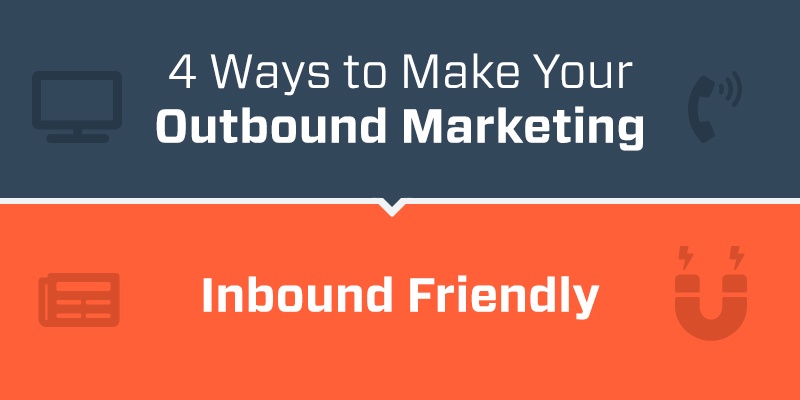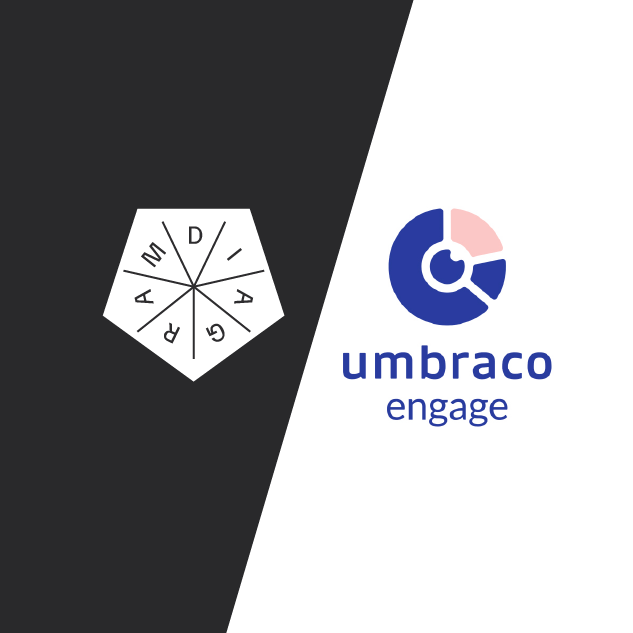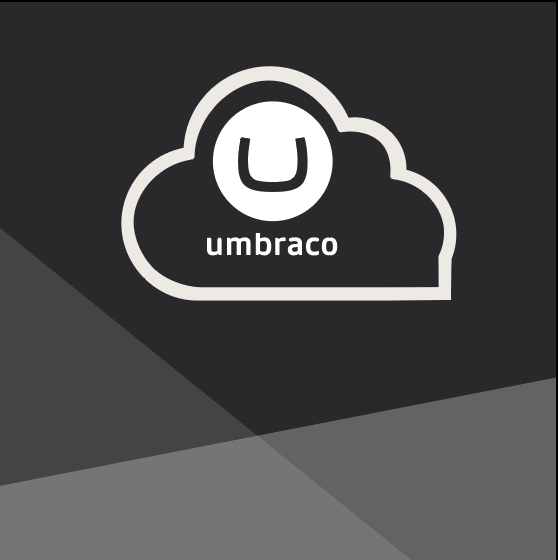4 Ways to Make Your Outbound Marketing Inbound Friendly
Katelyn Ahern Digital Project Manager#Digital Marketing, #Inbound Marketing

While Inbound Marketing might be the way of the future, outbound marketing can still be important. Learn how to integrate these two strategies.

In our age of information overload, inbound marketing has proven itself as the best way to cut through the noise and reach the customers who can benefit from your products and services. But while inbound marketing is the best way to reach your customers and generate leads, there are still certain times when outbound marketing is a good choice for your business. When this is the case, you’ll want to be sure to determine the best way to mix your inbound and outbound strategies. This will help you to leverage the outbound marketing tactics to assist your overall goals and complement your inbound tactics instead of working against them. Here are four guidelines for how to combine your inbound and outbound marketing in a way that serves your overall strategy:
1. Segment Your Audience
When participating in outbound marketing tactics, it is vital that you segment your audience in order to provide the right information to them. For instance, when using paid ads, be sure to take a step back and start with research on your buyer personas. You want to be sure you are reaching the ideal audience at the right time. Doing some research on where this audience finds information and when and how they consume this information will help you to place paid ads in the places where you can meet your ideal buyer personas rather than spending money to place an ad in front of consumers that will not be interested in your services or products. This can also be applied to email marketing, social media ads, and much more. Be sure to always be thinking, "How can I create a segment that will provide a stronger value to my audience?"
2. Simplify Your Message
When you are creating ads of any sort (banner ads, social media ads, direct mail, radio ads, etc.), make sure to keep things simple. What I mean by this is not only to simplify and clarify your message, but also to make your follow-up action simple, with a benefit that is easy to understand. Be sure to drive your audience to one single action (such as signing up for a free consultation); don't waste your limited amount of time with an overcomplicated follow-up. Make sure to be as clear as possible about the value your audience will receive by converting on your offer, and make it easy for them to do so.
Keep in mind that your follow-up page should be easy to find, which may mean creating a shortened vanity URL that is easy to remember for a radio ad or direct mail piece. If your audience cannot find your follow-up page, they will probably give up rather than doing an extensive search just to find your site.
3. Contact Only Those Who Want to Be Contacted
We all hate cold calling, whether we’re making the calls or receiving them. If you plan on picking up the phone to reach out to your leads or audience, be sure to contact those that have recently engaged on your website or other digital channels and have shown significant interest in your products or services. Don't bother calling everyone; this will not only waste your time, but also theirs. One thing to keep in mind is that a contact who has completed a single conversion on your website has probably not displayed a significant amount of interest, unless that conversion is a request for you to contact them. Use your phone wisely in order to help your audience and not scare them off or annoy them before they are ready to hear from you.
4. Create Useful and Relevant Content
As always, it is incredibly important to be sure you are providing value for your audience. You cannot expect them to share information or interest in your products without providing them with something they need and can use. By following the above practices for outbound marketing, you can increase the likelihood of reaching the segment of your audience that can find value in each piece of content and possibly lead to more conversions. A great way to continue providing useful and relevant content for your audience is to analyze your past metrics and adjust your strategy accordingly. This will give you a great start in determining what content is working and what content might be falling flat.
Outbound marketing may not be the right fit for your company, but when it is, remember these four guidelines to integrate your outbound marketing with your inbound marketing. If you have any tips of your own for keeping your outbound marketing inbound friendly please share them in the comments below.
Related Posts

Announcing Our Partnership with uMarketingSuite to Elevate Marketing Analytics and Personalization
We are excited to announce our partnership with uMarketingSuite to elevate marketing analytics and personalization.

How Umbraco Cloud Eliminates Technical Roadblocks and Empowers Marketers
How Umbraco Cloud Eliminates Technical Roadblocks and Empowers Marketers: focus on marketing instead of IT hassles to drive business growth effectively.
Results Matter.
We design creative digital solutions that grow your business, strengthen your brand and engage your audience. Our team blends creativity with insights, analytics and technology to deliver beauty, function, accessibility and most of all, ROI. Do you have a project you want to discuss?
Like what you read?
Subscribe to our blog "Diagram Views" for the latest trends in web design, inbound marketing and mobile strategy.
